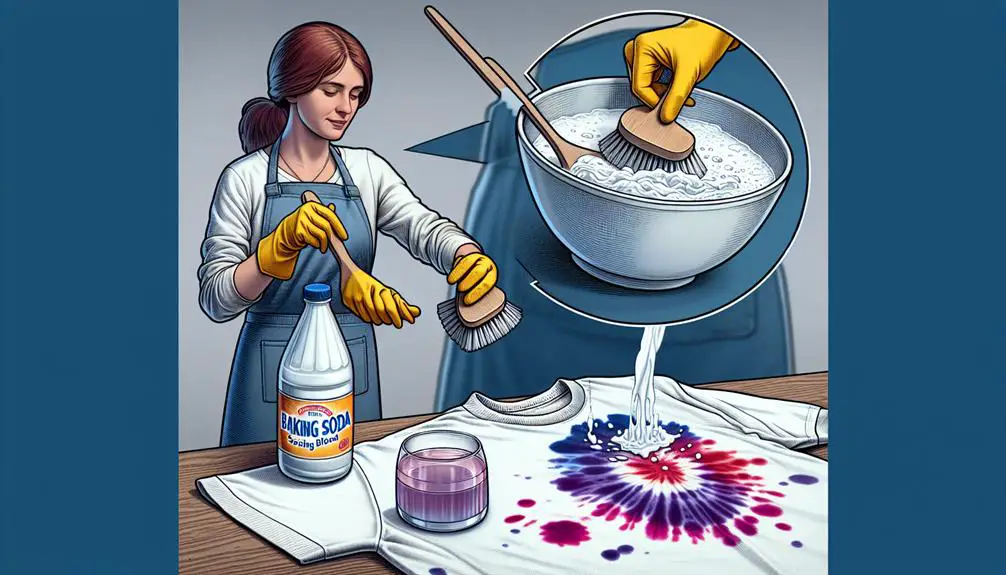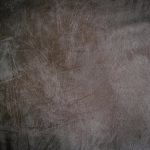When colors clash in the laundry, it's like a fashion faux pas that needs fixing.
Ever wondered how to rescue your colored clothes from the dreaded color bleed? Well, let's just say there might be a few tricks up my sleeve to help tackle this colorful conundrum.
So, are you ready to discover the secrets to salvaging your wardrobe favorites and bidding adieu to unwanted dye disasters?
Table of Contents
Key Takeaways
- Sort clothes by color to prevent bleeding
- Use color-catching sheets in the wash
- Test new colored items for fastness
- Soak in oxygen bleach solution for removal
Reasons for Color Bleed in Clothes
Color bleed in clothes often occurs due to poor dyeing techniques or improperly set dyes in the fabric. When these dyes aren't properly fixed during the manufacturing process, they can easily transfer onto other garments, especially during laundry. This issue is more prevalent with colors like orange and red, which have a higher tendency to bleed onto lighter fabrics, such as white. It's important to understand that color bleeds may not be immediately visible, and the problem often surfaces after washing. Therefore, it's essential to be cautious when washing different colored clothes together.
To remove dye transfer stains from clothes, it's crucial to act promptly. One effective method is to soak the affected garment in cold water mixed with a color-safe detergent. Gentle rubbing can help lift the stain, but avoid harsh scrubbing as it may worsen the bleeding. Additionally, using specialized color-removing products can aid in eliminating stubborn dye stains from clothes.
Precautions to Avoid Color Bleeding
Sorting clothes by similar shades is a simple yet effective way to prevent color bleeding during the laundry process. This helps avoid mixing colors that may bleed onto lighter garments.
Additionally, using color-catching sheets or color grabber cloths in the wash can trap loose dyes and prevent color bleed stains on other clothes. It's important to wash new dark or brightly colored items separately from lighter-colored clothes to prevent color transfer.
Before washing new colored garments, always test for colorfastness to avoid stains from colored clothes. When washing colored items, opt for cool water instead of hot water, as hot water can increase the risk of color bleeding.
If color bleeding does occur, consider using a commercial color remover product, especially for white clothes affected by color bleed. Taking these precautions can help maintain the vibrancy of your colored clothes and prevent unwanted color bleed mishaps.
Steps to Remove Color Bleed Stains
To effectively remove color bleed stains from colored clothes, begin by using an oxygen-based bleach solution. When tackling color bleed stains, prompt action is key to successful removal. Here are some essential steps to help you get rid of those pesky stains:
- Soak: Submerge the stained garment in a solution of oxygen-based bleach and water, following the product instructions for the right dilution.
- Rewashing: After soaking, wash the clothing item as usual in the washing machine. Check for any remaining dye traces post-wash.
- Avoid Machine Drying: To prevent setting the stain further, air dry the garment instead of using a machine dryer.
Using Vinegar for Color Bleed Removal
When dealing with color bleed stains on colored clothes, one effective and natural solution is utilizing white vinegar to break down dye molecules and lift them from the fabric fibers. White vinegar serves as a potent ally in combating dye transfer stains, thanks to its acidic properties that aid in dissolving and neutralizing these stubborn marks on your garments.
You can harness the power of vinegar by incorporating it into a pre-soak solution or simply adding it to the wash cycle. This versatile ingredient not only helps prevent further color bleeding but also acts as a gentle alternative to harsh chemicals, ensuring the safety of your colored clothes.
Final Tips for Color Bleed Prevention
As we aim to maintain the vibrancy and integrity of our colored garments, implementing these final tips for color bleed prevention becomes crucial in preserving their quality and appearance.
- Make sure to wash white and colored garments separately to prevent color bleed onto lighter fabrics.
- Remember that heat can set stains, so always use cold water when dealing with color bleed issues.
- When washing synthetic fabrics, using color-catching sheets or color catchers is an important step in preventing color transfer.
Frequently Asked Questions
How Do You Get Color Transfer Out of Clothes?
When you want to get color transfer out of clothes, I tackle it by using oxygen-based bleach and detergent for rewashing. Soaking in a bleach solution before the wash helps remove color bleed effectively.
Will Oxiclean Remove Color Bleeding?
Oxiclean effectively removes color bleeding from clothes. The active ingredient, sodium percarbonate, tackles stains by breaking them down. Users have found success restoring clothing colors. It's crucial to follow Oxiclean's instructions for best results.
Can Baking Soda Remove Color Bleed?
Absolutely, baking soda is fantastic for removing color bleed from colored clothes. I mix it with water to create a paste, apply it to the stains, let it sit for a few hours, then wash as usual. It works like magic!
Does Vinegar Stop Color Bleeding?
Yup, vinegar stops color bleeding by setting the dye and preventing further mishaps. I toss in a cup during the rinse cycle. It's a natural fix that keeps my colored clothes looking sharp!
- Where to Buy Sherpa Suede Fabric - July 12, 2025
- How to Draw or Illustrate the Texture of Suede Fabric - July 12, 2025
- What Is Baseball Suede Leather Fabric? - July 12, 2025




